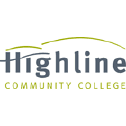What do they do?
Provide personalized assistance to individuals with disabilities or illness who require help with personal care and activities of daily living support (e.g., feeding, bathing, dressing, grooming, toileting, and ambulation). May also provide help with tasks such as preparing meals, doing light housekeeping, and doing laundry. Work is performed in various settings depending on the needs of the care recipient and may include locations such as their home, place of work, out in the community, or at a daytime nonresidential facility.
Also known as:
Aide, Care Provider, Caregiver, Caretaker, Companion, Direct Care Worker, Home Care Aide, Home Health Care Provider, Medication Aide, Personal Attendant, Personal Care Aide, Personal Care Assistant (PCA), Personal Care Attendant (PCA), Resident Assistant, Resident Care Assistant (RCA)
-
4.5%
Change
Ranks #49 in job growth rate16,920Job Openings
Ranks #11 in net job growth
Looking for colleges that offer a specific major? Use the College Match Tool to find your best-matched schools and discover your estimated Net Price!
People in this career often have these skills:
- Service Orientation - Actively looking for ways to help people.
- Social Perceptiveness - Being aware of others' reactions and understanding why they react as they do.
- Active Listening - Giving full attention to what other people are saying, taking time to understand the points being made, asking questions as appropriate, and not interrupting at inappropriate times.
People in this career often know a lot about:
- English Language - Knowledge of the structure and content of the English language including the meaning and spelling of words, rules of composition, and grammar.
- Transportation - Knowledge of principles and methods for moving people or goods by air, rail, sea, or road, including the relative costs and benefits.
- Customer and Personal Service - Knowledge of principles and processes for providing customer and personal services. This includes customer needs assessment, meeting quality standards for services, and evaluation of customer satisfaction.
- Psychology - Knowledge of human behavior and performance; individual differences in ability, personality, and interests; learning and motivation; psychological research methods; and the assessment and treatment of behavioral and affective disorders.
- Education and Training - Knowledge of principles and methods for curriculum and training design, teaching and instruction for individuals and groups, and the measurement of training effects.
People in this career often have talent in:
- Oral Comprehension - The ability to listen to and understand information and ideas presented through spoken words and sentences.
- Oral Expression - The ability to communicate information and ideas in speaking so others will understand.
- Problem Sensitivity - The ability to tell when something is wrong or is likely to go wrong. It does not involve solving the problem, only recognizing that there is a problem.
People in this career often do these activities:
- Document client health or progress.
- Maintain client information or service records.
- Administer basic health care or medical treatments.
- Teach health or hygiene practices.
- Monitor health or behavior of people or animals.
- Develop plans for programs or services.
- Provide counsel, comfort, or encouragement to individuals or families.
- Perform housekeeping duties.
- Prepare foods or meals.
- Assist individuals with special needs.
- Drive vehicles to transport patrons.
This page includes data from:

 Occupation statistics: USDOL U.S. Bureau of Labor Statistics Occupational Employment Statistics
Occupation statistics: USDOL U.S. Bureau of Labor Statistics Occupational Employment Statistics





